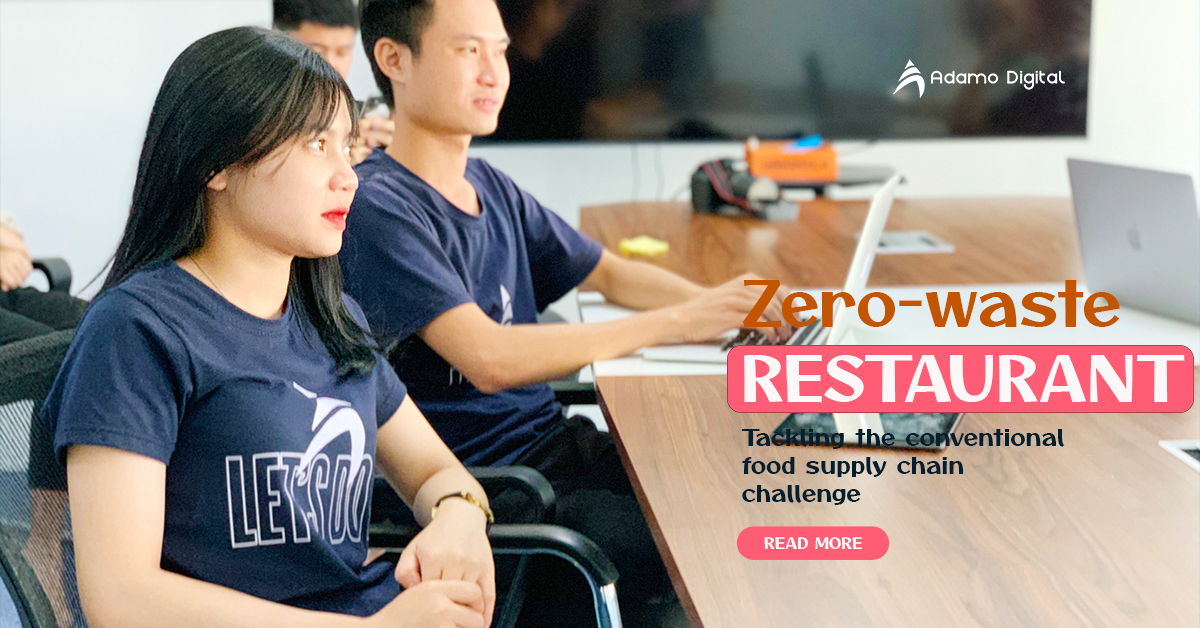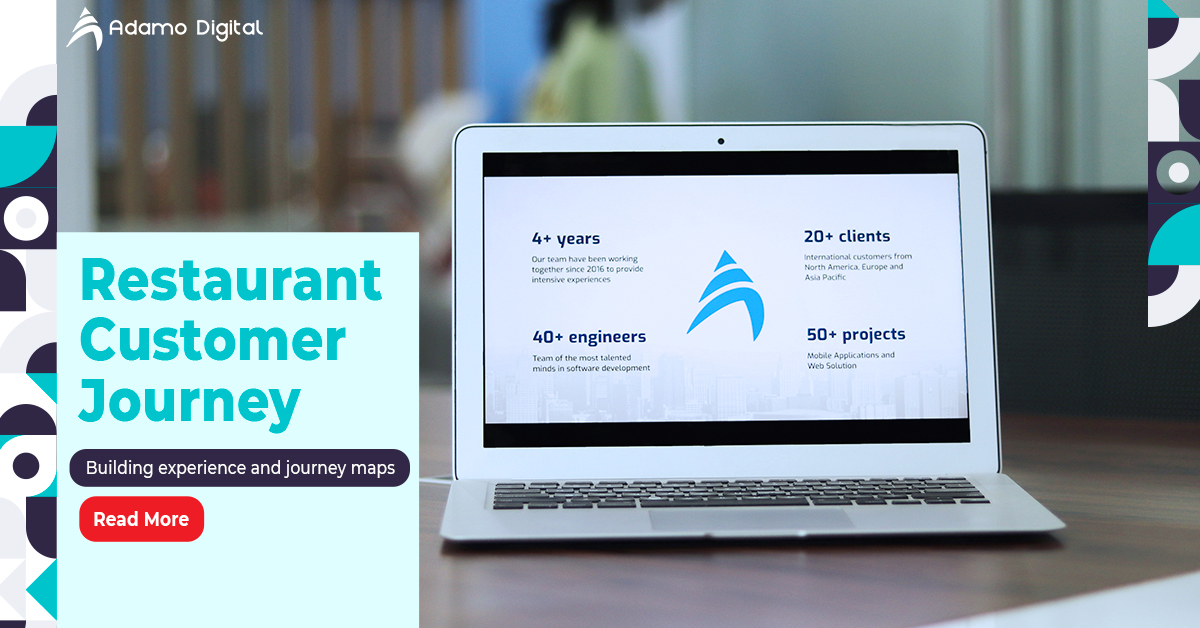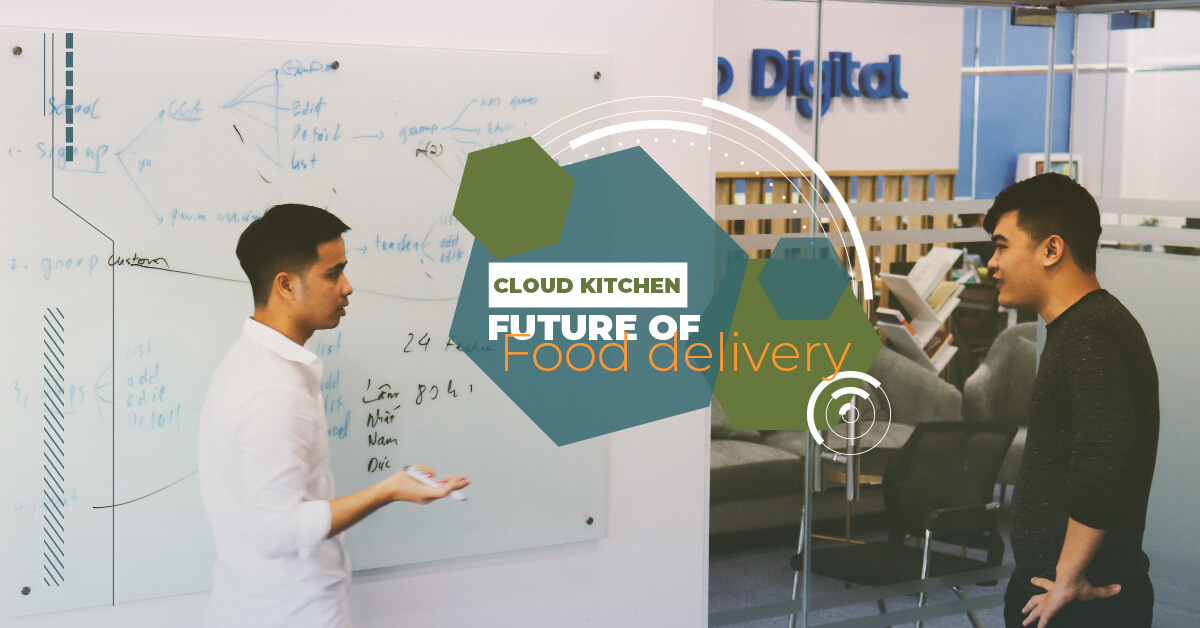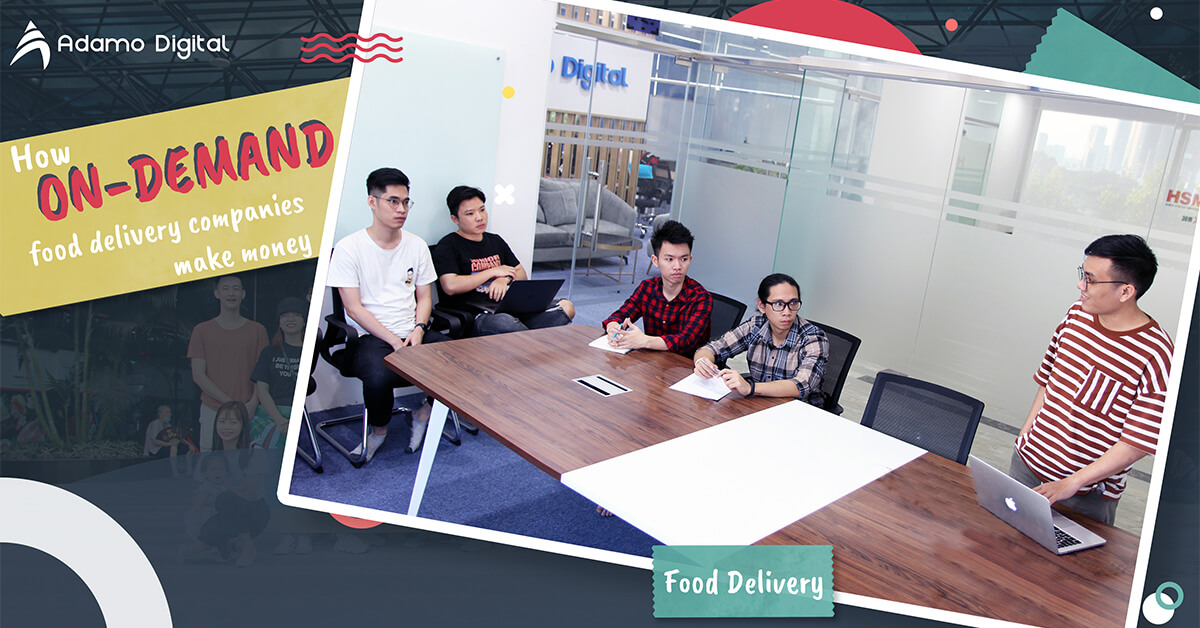Technology in food industry: The impact of digital transformation

The paradox that amidst civilization, parts of the world suffer from food shortages, enabling the rapid revolution of technology in food industry.
The digitalization in the food industry has begun for over 30 years with the support of technology innovation. In which digital transformation contributed to cost reduction and food production optimization due to the emerging of mobile app development, automated processing, robots, and big data. Accordingly, food tech claimed to be the central factor, rescoring several areas from the threat of food scarcity, especially in Africa and parts of North America.
Unfortunately, the appearance of pandemics or other uncertainties disrupts the food industry. Accordingly, an economic crisis has spread globally from America to Europe and Asia, leading to an increasing in the unemployment rate and the fallen of social income. The demand for food seemingly reaches a new peak in the upcoming decade that burdens both business and political sectors. To overcome recent challenges, we will show you how to apply digital transformation in the food industry for constructing the new order in the world business.
Impact of technology in food industry
Undoubtedly, the digitalization food industry is catering to novel sources that the whole sector has redirected the movement trajectory. Whereby the appearance of IoT, cloud computing, or monitoring has a profound impact on food and beverage businesses, especially in food services and food productions. Those digital transformation has seemingly knocked out several traditional business models which denied to adopt new technology and innovation. But what are the roots of the food tech industry, and how it looks like recently? Here are the answers.
The driving force of the food tech industry
Along with the growth in the modern lifestyle, people are getting busier, especially in cities or suburban. In which, the term of conveniences is demanding among the food and beverage markets, which tends to be one of the most profitable areas for most businesses. In this case, the food-tech industry is born to adapt to the rapid changes in customer preferences.
Generally, food tech covers four centered concepts, including the online ordering system, food delivery system, inventory management software, and restaurant POS system. The market for applying technology in the food industry is predicted to reach over US$250 billion at the end of 2022. Many experts explained this lucrative standing depended on four driving forces:
_ Demand for more healthy and nutrient products: the healthcare concern is listed on the top of customers’ desires. According to an investigation involved by over 40,000 participants pointed out that roundly 43% of respondents concern the term healthier when consuming foods. It forces the food business to several problems of ingredient contribution, which contributed to nutrient-related problems. Expressly, food products desiring to be commerce need to be both healthy and tasty, which contain fewer baddies and more goodies.
_ Demand for better efficiency in food production: with the need for more food volume, food producers are currently seeking digitalization and automation in reducing cost while remain output and quality. Accordingly, they are leveraging the innovation of automated machines, hardware, and software development to replace manual tasks. Whereas the value of software and date per employee in food manufacturing had increased by over 35% from 2016 to 2020.
_ The impact of environmental and political sectors: animal welfare and food safety remain debated among communities, leading to new regulations and legislation imposed on the food and beverage industry. Besides, the threat of climate change induces the need of reducing energy and food waste. It directly affects the direction of the digital transformation process.
_ Reality and perception gap: mass production imposes a heavy burden in Food retail network, which demands applied human intervention solutions in every food process. For increasing the accuracy rate in every task applying technology in both production and distribution tend to be the norm.
Digital transformation in the food industry
In this decade, the term artificial intelligence (AI), the Internet of Things (IoT), and machine communication formed another norm of technology in food industry, which is claimed as the typical representative of digital transformation.
Recently, global food production and services step out of times of traditional processing to turn on the concept of intelligence.
In the current world, data is put into the central role, enabling the key to optimize the entire phase of development. Instead of production, digitalization creates a new order in distribution, which enhances the inter-connection. In which, from the collected data, it came up with a better and accurate understanding regarding customers and the market. Whereby several custom mobile or web applications are born in favor of accelerating the innovation of the food and beverage industry.
Generally, digital transformation seemingly contributed to every corner in life, which affect the entire players, including food distributions, retailers, productions, and restaurants. Accordingly, it allows businesses to turn challenges into opportunities.
Also read: Top IOT solutions in Food and Beverage Industry
The innovation of technology in food industry
From time to time, the food tech industry involves revolution coming, benefits most players in the market. Evidently, the innovation in the food industry would benefit software development companies with massive projects to build hi-tech solutions for food and beverage businesses.
Benefits of technology in food industry
Research and investigations prove that food and beverages services as restaurants, meal prep business, online distributions lean of software development enjoy significantly high proficiency and less cost than others. For more specific, food tech seemingly brings more benefits to several corners of the food industry.

_ Forecasting supply and demand for food for reducing waste: Inventory management applied IoT would provinces reports and analysis in predicting the actions of the potential of both producers and customers in the market.
_ Better control of equipment: Smart sensors would help food businesses identify any anomalies occurring in each step of the processes. In which, businesses could optimize the usage of machines and equipment
_ Enhancing customer experiences: with the growth of food technology in the food industry, businesses could reduce the load time. Alternatively, with data analytic integrated business owners could better understanding their customers for instant serve their need.
_ Improving flexibility: for adapting business uncertainties, technology in the food industry with the digitalization process could contribute to risk management and solution forming that provide tools for companies adapting to changes.
_ More accurate in food safety: not only providing customers with consistent quality products, food processing technology offers safe environments for workers performing their tasks.
Technology in food services
One of the ideal technologies in the foodservice industry tends to be ghost or cloud kitchens, inspiring from the effort of saving cost for a physical location. In America, Uber Eats and Deliveroo dominate the food delivery market, especially amidst, and after the coronavirus outbreak, demand for food delivery suffers a lift. Accordingly, most restaurants have to open their virtual store in some food delivery apps for adopting with changing customers’ desires.
To leveraging the infrastructure of the delivery platform, restaurants need to pay a margin cost, which is commonly 20-30% as the commission. Therefore, many restaurants decided to cut down a couple of its operating costs to compensate. Accordingly, it gave birth to the concept of ghost kitchen that restaurants do not need any dining areas. They only need to focus on making food for delivery by cutting down labor forces and rent costs of physical location.
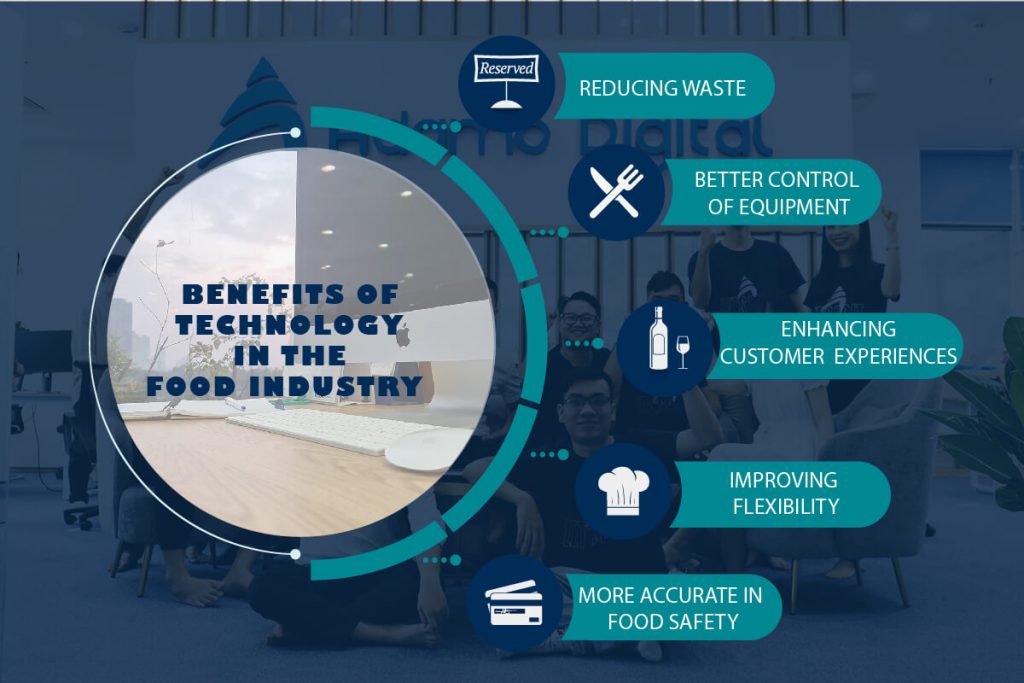
Innovative restaurant technology
Under the pandemic in 2020, the global restaurant technology market suffered from disruption. On the contrary, it claimed to be a fascinating time for reconstruction and recovery. The world currently desires innovative technologies to break down the gap of business complexes. In this time, the food delivery solution tends to be the potential aspect, attracting both restaurateurs and investors.
Statistically, revenue from selling food with delivery options accounted for roundly 6% of total restaurant income on average. Besides, a lucrative future of the food delivery market has been predicted with a growth rate of 10% annually. That’s why on-demand food delivery software development would become more potential due to the immense demand for building a custom system, serving the specific need of each company.
On the other hands, there are several restaurant technologies would dominate the market in this decade:
| Technological Trends In Restaurants | Examples |
| Voice technology | Alexa, Google assistant, Siri |
| Chatbots | A platform of Facebook, What apps or custom mobile apps |
| Self-ordering kiosk | Most large restaurant chain like KFC has developed a custom kiosk. |
| Handheld ordering devices | Taken by the servers integrated with restaurant POS system |
| Custom restaurant mobile app | Fully- integrated system for monitoring all processes |
| Kitchen Display Systems (KDS) | Ensure smooth communication among front of house staffs and kitchen staff |
| Tabletop Ordering System | Digital menu technology |
The emerging of Robot and automation
From the context of food processing technology and technology in food services, automated machines and robots are leveraging to control food quality. Additionally, it adds stability to food factories or even restaurants, which need optimizing inventory management.
It can be said that the robot edge deserves to deputize the tangible spirit of food tech. Evidently, many parts of North Europe comprehensively leverage robots with a growth rate of about 20% in numbers annually. Currently, roundly 30,000 robots have taken charge of works in Europe. Robots help food and beverage businesses broking the limitation of dangerous or high accuracy jobs. For example, for cutting meats, a program for butchery robots by JBS has reduced injuries for workers.
The food packaging sector has profoundly emerged as the assistant of robotics and automation. Evidently, approximately 95% of packages are produced by robots. In fact, the food processing technology is estimated at over US$ 32 billion. Industry experts believe that automation would be an efficient solution to eliminate the shortage of low unskilled labor in Western countries.






